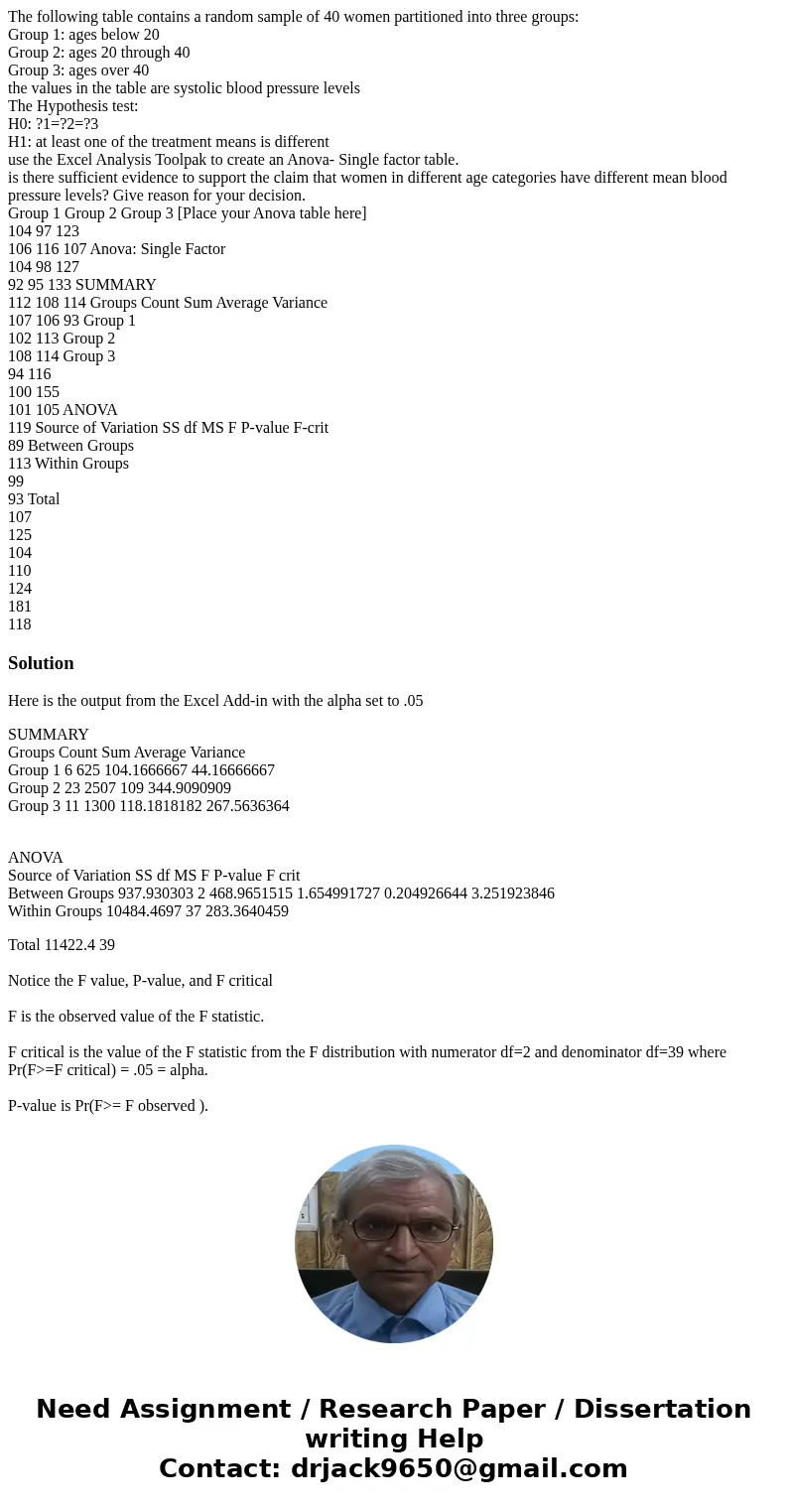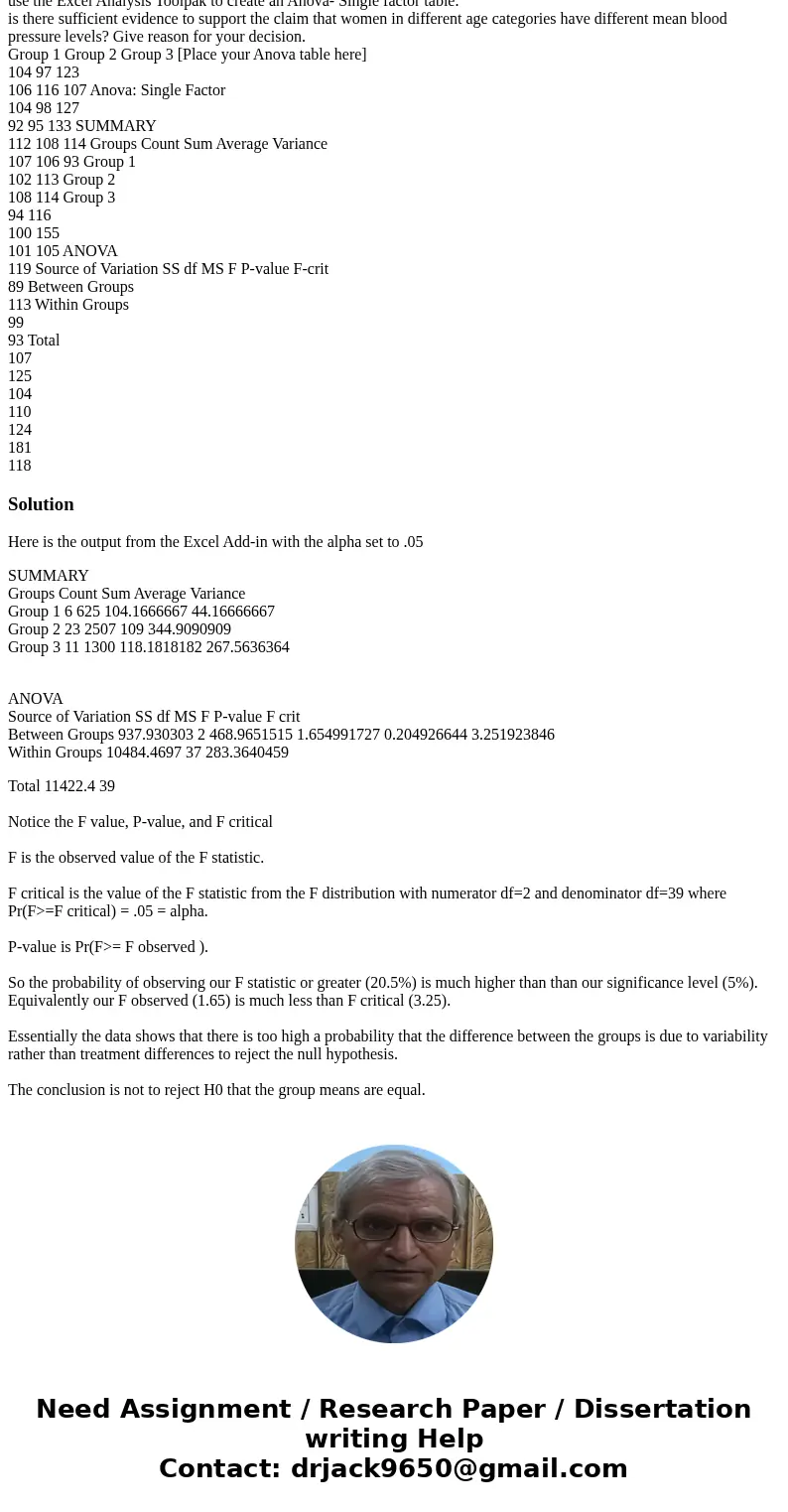The following table contains a random sample of 40 women par
The following table contains a random sample of 40 women partitioned into three groups:
Group 1: ages below 20
Group 2: ages 20 through 40
Group 3: ages over 40
the values in the table are systolic blood pressure levels
The Hypothesis test:
H0: ?1=?2=?3
H1: at least one of the treatment means is different
use the Excel Analysis Toolpak to create an Anova- Single factor table.
is there sufficient evidence to support the claim that women in different age categories have different mean blood pressure levels? Give reason for your decision.
Group 1 Group 2 Group 3 [Place your Anova table here]
104 97 123
106 116 107 Anova: Single Factor
104 98 127
92 95 133 SUMMARY
112 108 114 Groups Count Sum Average Variance
107 106 93 Group 1
102 113 Group 2
108 114 Group 3
94 116
100 155
101 105 ANOVA
119 Source of Variation SS df MS F P-value F-crit
89 Between Groups
113 Within Groups
99
93 Total
107
125
104
110
124
181
118
Solution
Here is the output from the Excel Add-in with the alpha set to .05
SUMMARY
Groups Count Sum Average Variance
Group 1 6 625 104.1666667 44.16666667
Group 2 23 2507 109 344.9090909
Group 3 11 1300 118.1818182 267.5636364
ANOVA
Source of Variation SS df MS F P-value F crit
Between Groups 937.930303 2 468.9651515 1.654991727 0.204926644 3.251923846
Within Groups 10484.4697 37 283.3640459
Total 11422.4 39
Notice the F value, P-value, and F critical
F is the observed value of the F statistic.
F critical is the value of the F statistic from the F distribution with numerator df=2 and denominator df=39 where Pr(F>=F critical) = .05 = alpha.
P-value is Pr(F>= F observed ).
So the probability of observing our F statistic or greater (20.5%) is much higher than than our significance level (5%). Equivalently our F observed (1.65) is much less than F critical (3.25).
Essentially the data shows that there is too high a probability that the difference between the groups is due to variability rather than treatment differences to reject the null hypothesis.
The conclusion is not to reject H0 that the group means are equal.


 Homework Sourse
Homework Sourse